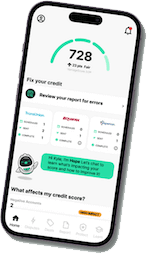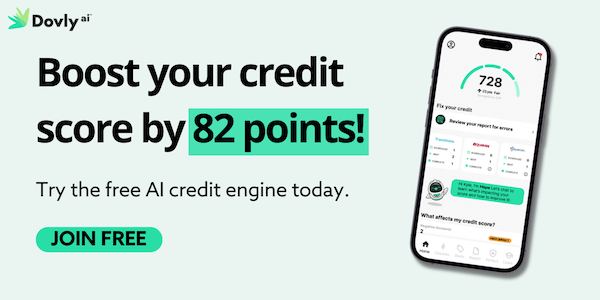624 Credit Score: Understanding the Implications for Your Finances

A 624 credit score sits in a tricky spot—not bad, but not quite good either. It can limit your credit options and lead to higher interest rates, but it’s far from a dead end. In this guide, we’ll break down what a 624 score really means, how lenders view it, and the smartest ways to improve it. Whether you’re rebuilding from setbacks or just starting your credit journey, there’s a clear path forward.
624 Credit Score: Stuck in the Gray Zone
If you’ve checked your credit and discovered a score of 624, you might be wondering what that means—and what comes next. A 624 credit score sits in a kind of gray zone: it’s not considered “bad,” but it’s not quite “good” either. It can be frustrating, especially if you’re trying to qualify for a loan, a credit card, or a mortgage.
The good news? A 624 score isn’t the end of the road—it’s just the beginning. Let’s break down what this score means, how lenders see it, and what you can do to move toward stronger credit and better financial opportunities.

Understanding a 624 Credit Score
At 624, your score falls into the fair category. That means you may qualify for credit, but with higher interest rates and more limitations compared to borrowers with higher credit scores. You might even find some doors closed altogether, depending on the lender.
The average credit score is around 717 with FICO, while the average VantageScore is close to 701. That puts a 624 score well below the national average, signaling to lenders that you could be a higher-risk borrower.
But context is key: if your 624 score is the result of short credit history or one-time mistakes, lenders may still work with you—especially if you’re trending upward.
One important nuance: a 624 doesn’t tell the whole story. For example, a 22-year-old college grad might have a 624 because they’re just getting started—limited history, not many accounts, and low limits.
But someone in their 40s might be coming back from financial hardship, such as missed payments or bankruptcy. Same score, very different context. That’s why it’s important to look at the “why” behind your number—because the path forward will depend on it.
Lending with a 624 Score: Your Real-World Options
So, what can you actually do with a 624 credit score? You’re not shut out of borrowing, but you’ll need to be strategic.
Credit Cards
Some credit card issuers may approve you for unsecured cards, but you’ll likely face lower limits and higher interest rates. If you’re declined, many issuers also offer secured credit cards, which require a deposit and are designed to help you build or rebuild credit responsibly.
Car Loans
Lenders frequently work with fair credit borrowers. However, you’ll likely see higher APRs—possibly in the 10–15% range or more. Having a down payment can help you secure better terms.
Personal Loans
You may still qualify for a personal loan, but your rates won’t be the best available. Consider working with lenders who specifically serve fair credit customers.
Mortgages
You won’t qualify for a conventional mortgage at this score, but FHA loans are a viable option. FHA guidelines allow for scores as low as 580, though a score above 620 usually gets you better terms and a smoother approval process.
Retail & “Buy Now, Pay Later”
Store credit cards and BNPL services often approve borrowers with fair scores—but these can come with higher annual fees and lower limits, so use them wisely.
The key takeaway: you can borrow with lower credit rating, but everything—interest rates, limits, and approval odds—comes with trade-offs.
Credit Score Ranges and What Affects Your Score
Understanding where your 624 score sits on the credit scale—and what influences it—is the first step toward improvement.
FICO vs. VantageScore Ranges
Most lenders use either the FICO Score or VantageScore (created by the three major credit bureaus) model to evaluate your creditworthiness. While both range from 300 to 850, they break down that range into slightly different categories:
FICO Score Ranges:
- 800–850: Exceptional
- 740–799: Very Good
- 670–739: Good
- 580–669: Fair
- 300–579: Poor
VantageScore Ranges:
- 781–850: Excellent
- 661–780: Good
- 601–660: Fair
- 500–600: Poor
- 300–499: Very Poor
With a 624 score, you’re in the fair range on both scales—just shy of reaching Good. That may not seem far off, but that 40–50 point gap can significantly affect your access to lower interest rates, higher credit limits, and stronger loan approvals. Please note that you may see multiple credit scores depending on where you pull your credit score from.
What Affects Your Score the Most
Your credit score is calculated using five core components gathered from your credit report. Here’s what goes into it—and how each area may be impacting your current score:
1. Payment History (35%)
This is the biggest factor. A single late or missed payment can have a significant impact—especially if it’s recent.
2. Credit Utilization Ratio (30%)
This looks at how much of your credit limit on your credit card accounts you’re using. Ideally, keep your credit card balances under 30% usage, but lower is better.
3. Length of Credit History (15%)
The age of your credit accounts matters. The longer your credit history, the more data lenders have to assess your habits.
4. Credit Mix (10%)
A healthy mix of accounts—like credit cards, auto loans, and installment loans—shows you can manage different types of credit responsibly.
5. New Credit Inquiries (10%)
Each new application triggers a hard inquiry, which can slightly lower your score, especially if you apply frequently.
How to Improve a 624 Credit Score
If you’re looking to level up your score, the path forward is about consistency and smart credit habits. Here are the best ways to start climbing whether you are working on building credit or repairing your credit.
1. Pay Everything on Time
On-time payments are the #1 driver of a good credit score. Set up automatic payments or reminders to avoid missed due dates.
2. Lower Your Credit Utilization Rate
If your cards are close to maxed out, that’s hurting your score. Aim to pay them down, ideally under 30% of your available credit—or even lower.
3. Dispute Any Errors
Check your credit report for mistakes. If something looks wrong—like a payment marked late that wasn’t—file a dispute with the credit bureau.
4. Use Tools Like Experian Boost
Free tools like Experian Boost can help you get credit for on-time utility or streaming payments. It’s not a game-changer, but every point helps.
5. Open a Secured Card or Credit-Builder Loan
These low-risk tools help you add positive activity to your file, especially if you have a thin history.
6. Monitor Your Credit Score Regularly
Use apps to track changes, simulate improvements, and stay motivated. You can’t manage what you don’t measure.
7. Plan Big Moves Carefully
If you’re buying a car or house soon, avoid new credit accounts or major changes. Let your score stabilize first.
Risks to Avoid at a 624 Credit Score
Improving your score is important—but not making it worse is just as critical. Here are common traps to watch out for:
1. Applying for Too Much Credit at Once
Each credit application triggers a hard inquiry. Too many of these in a short time lowers your score and makes lenders nervous.
2. Closing Old Accounts
Think twice before shutting down a card—even if you don’t use it. Older accounts help your average age and add to your total available credit.
3. Falling for Credit Repair Scams
Some companies promise a “quick fix,” but charge high fees and often deliver little. Stick to reputable tools (like Dovly!) and DIY strategies.
4. Co-signing Loans
Even if you’re helping someone, co-signing can your credit at risk. If they miss a payment, it’s your score that takes the hit. Same goes for authorized users.
Conclusion: You’re Closer Than You Think
A 624 credit score might feel like you’re stuck in the middle—but it’s actually a sign that you’re within reach of real financial growth. With just a few consistent habits—making timely payments, responsible credit use, and some patience—you could be looking at a score in the 670s or higher within a year.
Remember: your credit score doesn’t define you. But it can unlock the financial freedom you deserve. Ready to take control of your credit and move past the 620s? Dovly’s free AI credit engine helps you fix errors, boost your score, and track progress—all in one place.
👉 Start repairing your credit with Dovly today.
Frequently Asked Questions




